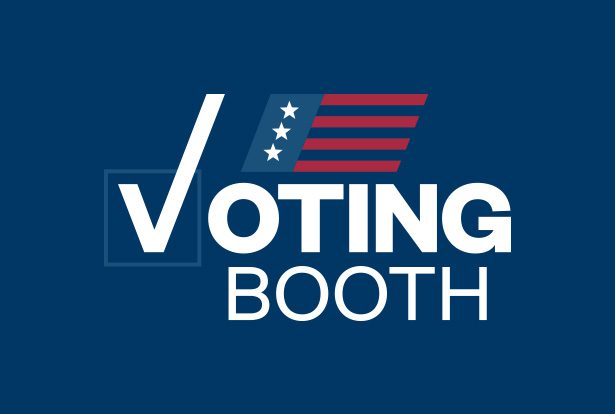The Democratic National Committee has reversed course on offering a “virtual voting” option for the party’s 2020 Iowa and Nevada presidential caucuses. Instead, those early nominating contests will largely resemble what occurred in 2016, with Nevada offering an early voting option and Iowa studying if that is feasible.
“There is no tele-caucus system available that is sufficiently secure and reliable, given the magnitude and timing of the Iowa and Nevada caucuses this cycle,” the DNC chief security and chief technology officers said in an August 30 letter to the Rules and Bylaws Committee. They also cited “the current cybersecurity climate,” “the recent U.S. Senate Intelligence Committee report on Russian interference” in 2016, and inaction by Republicans and the White House to adequately respond.
Cybersecurity issues were the top concern and a credible one, too, as the Russian-led hacking in 2016 was this decade’s version of the 1970s Watergate break-in. But there were other issues. One was whether the two state parties could manage deploying new end-to-end voting systems, including some elements that were still under development with 2020 only months away. Another issue was a lack of sufficient backup plans—especially in Iowa.
This news should not surprise readers of the Independent Media Institute’s Voting Booth reports. Since last January, this project has been covering what were poised to be the biggest potential changes in the Democratic Party’s presidential nominating contests in a half-century.
Starting with Iowa’s hope to expand participation, Voting Booth has produced a dozen reports, starting last winter by highlighting problems that Utah Republicans had as they tried online voting in their 2016 and 2018 party caucuses, and problems with online voting experienced by 50 Ontario municipalities last fall. Those problems had nothing to do with Russia, but showed the difficulty in deploying new voting systems.
Vendors experienced unexpected technical problems, such as a registration system that didn’t always work. (Utah’s GOP used Eventbrite in 2016, an event-planning app.) Voters faced bottlenecks with downloading other apps and signing in. Utah’s party lacked customer service support. In Ontario, there wasn’t sufficient bandwidth for transmitting balloting data, causing 50 municipalities to extend voting by a day. These unexpected snafus undercut participants’ confidence. U.S. anti-computer voting activists even tried to sabotage one of the Utah Republican caucuses by putting up a fake web page—to show what was seen online could not be trusted.
The point of this coverage was alerting Democratic Party officials to the waters they would soon be swimming in: where unfamiliar systems were likely to frustrate some voters; where vendors were prone to over-promising; and noting that new voting systems were typically introduced in low-stakes contests because elections are notorious for unexpected problems.
As details of the early caucus state parties’ plans emerged, Voting Booth tried to flag other potential issues. It profiled a 2017 Canadian provincial party-run leadership election, where some elements envisioned by Iowa and Nevada—getting a log-in and PIN number via email to vote—were hijacked by one campaign. That example was an online cousin to the 2018 hijacking of paper absentee ballots by GOP operatives in North Carolina’s ninth congressional district. These are all versions of ballot box stuffing.
The project also profiled a smartphone voting system that Denver used in city elections this May for its overseas civilian and military voters. West Virginia used it last year. Alaska’s Democratic Party is seeking to use this system for its rural voters, including Native Americans. But Alaska’s April caucus doesn’t have the political impact of Iowa, the opening contest, or Nevada, the third. The first-in-the-nation New Hampshire presidential primary is between the two.
As the state parties pressed ahead, Voting Booth sought feedback on what was under development. In June, the project reported on the reactions of cybersecurity experts and voting system contractors to Iowa’s RFP—its request for proposals—a private document that laid out the system design. Voter unfamiliarity with a new system, not hacking, was their top concern. But the Rules Committee members, who are veteran campaigners, were well aware of reports by congressional committees and warnings from security experts that the party’s caucuses may be 2020’s top hacking target. State parties manage caucuses, not government election officials. These contests rely on rented voting systems, not long-standing infrastructure. There’s no legal penalty for meddling in non-governmental elections.
Voting Booth reported on the last extensive public review by the Rules Committee of Iowa’s and Nevada’s 2020 plans. But even at that June 28 meeting in Pittsburgh, some committee members expressed worry that these states did not have backup plans. Others heard that key components, such as an app for Nevada precinct chairs, had not yet been built. That meant the full system could not be assessed from a security standpoint by the DNC’s staff. After that meeting, the committee continued discussing caucus planning in private. The DNC staff also created an expert advisory panel to weigh in.
After the Nevada state party held a press conference touting its virtual voting plans—which did not have final Rules Committee approval—Voting Booth reported on the ballot design and user issues associated with its anticipated telephone keypad system. (Iowa would also be using this same interface.) Voters would listen to a recorded script and rank upwards of 20 candidates five times in a row. The states wanted to emulate the caucus process where only candidates who received 15 percent or more in a precinct would be allocated delegates to the process’s next stage. Ranking candidates meant voters would likely pick a candidate who secured delegates.
The telephone interface would list candidates in alphabetical order. Experts said that would give a 2-to-3 percent boost to those listed first. (Press two for Joe Biden, 23 for Elizabeth Warren.) Voting Booth also parsed warnings in Special Counsel Robert Mueller’s congressional testimony, where he said that Russian intelligence operatives were working on hacking and disinformation efforts aimed at America’s 2020 elections.
Meanwhile, Voting Booth turned its attention to other topics about preparedness—or a lack thereof—for resolving close contests, should the 2020 election bring challenges and recounts. Some states’ hopes to replace entirely paperless voting systems were running into delays. Elsewhere, a new system now being widely acquired did not leave the highest-quality record of its ballots, which could mar recounts and public confidence.
Then the DNC held its summer meeting in late August, where the Rules Committee continued its review—mostly focusing on Iowa and Nevada. A closed session became testy as party leaders from the states were apparently told that the DNC staff had hacked into a conference call they all had been on—to show that the telephone-based system was not secure.
The two states’ party leaders felt ambushed and said so. After all, they had spent months working to build systems to meet the Rules Committee’s 2020 requirements, which included a remote voting option. But a key point had apparently been made. It was too risky to debut a new and untested voting system in five months. Time was running out. As a longtime committee member, Harold Ickes, bluntly said later in a hotel lobby, “If we screw up Iowa, Trump’s going to shove it up our ass.”
And so the Rules Committee’s co-chair, James Roosevelt Jr., later said that the panel would keep reviewing the caucus states’ 2020 plans and look for another way to have remote participation. The most likely option would appear to be voting by mail or at early voting centers. Other presidential caucuses—to be held in Alaska, Hawaii, Kansas, Nebraska, Wyoming, U.S. territories and abroad—have yet to have their 2020 plans fully approved. Only Alaska was seeking to use a smartphone voting system, arguing phone service was more reliable than rural mail delivery.
Roosevelt hoped all of the caucus plans would be final by mid-September. That meant more work, and, unavoidably, new questions. For Iowa, the top question is whether an early voting option (involving a ballot) would conflict with New Hampshire’s status as the nation’s first primary state (which also uses a ballot). While other early 2020 states are mailing ballots to overseas civilian and military voters 45 days before their contests, that activity isn’t seen by New Hampshire as threatening its status.
Meanwhile, last Friday, when the DNC announced its decision to reverse its virtual voting plans for Iowa and Nevada, was a hard one for those states’ Democratic Party officials. Iowa Democratic Party Chairman Troy Price held a press conference to reassure the press and public, amid plenty of frustration. But, as Ickes said, “the heat” that these state parties are now feeling would be nothing compared to what would ensue if 2020’s early caucuses somehow failed to deliver a clean result.
The Rules Committee doesn’t like to abandon its goals. It still has a mandate to expand participation for those not physically present at a 2020 presidential caucus. How it gets there is unresolved. However, the options are few. Voting Booth will cover them.

